Twente Additive Manufacturing puts 3D printing at the heart of more sustainable construction
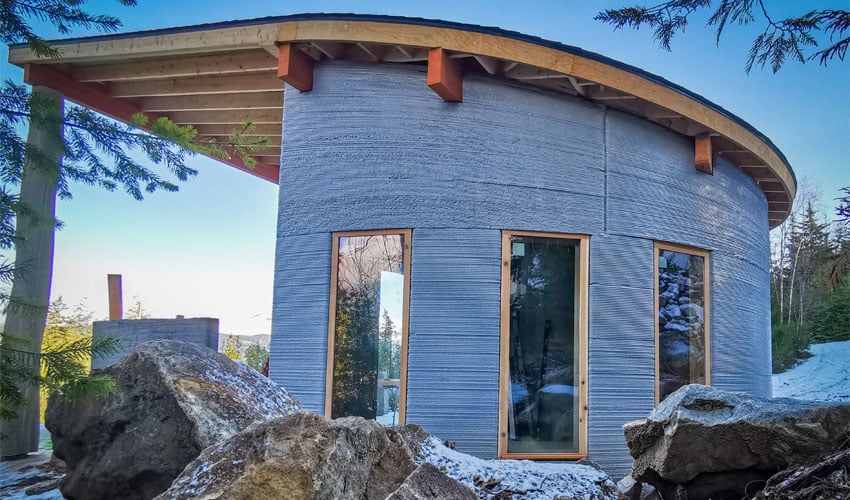
Twente Additive Manufacturing (TAM) is a Dutch company that has developed a concrete 3D printing method to build the walls of our future homes. This method is particular in that it relies on the famous Fibonacci sequence to conceptualise spiral-shaped constructions and thus natural progressions of space. Its first project in Canada, this year, marked the beginning of a great adventure for the young company. The company has now joined the players in additive concrete manufacturing, a market that has been growing for a few years now. In order to learn more about their projects and technology, we contacted the Twente Additive Manufacturing team who have entrusted us with their ambitions.
3DN: How did the idea of Twente Additive Manufacturing come up?
The first ideas came from our President and Co-founder Ian Comishin in the fall of 2018 when looking at the existing construction industry with its relatively slow adoption of new construction methods along with the emerging technology of 3D concrete printing which had taken root in many regions including the Netherlands where Ian and a few other co-founders were based. Our aim from the very beginning was to bring our groups automation experience to bear on the challenging task of bringing the construction industry forward into the 21st century. Huge improvements in efficiency along with a serious promise of reduction of waste and emissions were the initial motivators but another aspect which is beginning to show its merits is the “freedom of design” with little or no added costs from conventional designed versions.
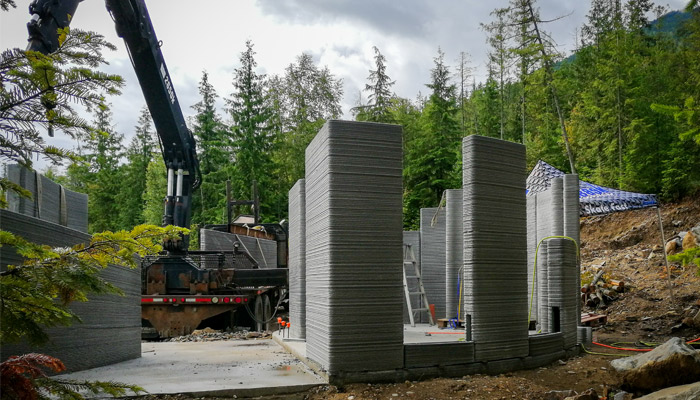
Twente Additive Manufacturing has developed a solution to 3D print the walls of a house (photo credit: TAM)
3DN: Why did you choose the Fibonacci sequence to 3D print a house? What are the advantages?
The first goal of the Fibonacci house construction was to demonstrate the process differences with non-linear walls. When looking for the value added by the additive manufacturing the public automatically tries to do direct comparisons to the simplest form of conventional construction and then are surprised that the 3D printed version is not competitive. The additive manufacturing method of construction starts being competitive as complexity increases such that when you try to compare the wood framed version of a Fibonacci spiraled building with the 3D printed version, the most attractive option becomes the layered mortar bead. The second benefit to the Fibonacci spiral is the natural progression of the spaces from wide open exterior facing spaces in the living room to the closed and warmer shower space in the tightest part of the spiral.
3DN: Can you tell us a bit more about that house?
With its 28m² ground level surface the Fibonacci house can be considered as a tiny house. It also features a mezzanine with sleeping space for four people. The printed elements are mainly made of 1 component print material from Laticrete. The 4.5m high columns of the patio roof are printed with 2 component material from Baumit. The slender elements were calling for a material with extra high build rates of up to 20m height per hour. The insulated walls hold all the HVAC conduits and infrastructure. The non-printed elements of the house like doors, windows, roof etc. are either refurbished elements or locally sourced wood constructions with the purpose of reducing the CO² footprint as much as possible. Finishing of the interior is ongoing but should be completed very soon.
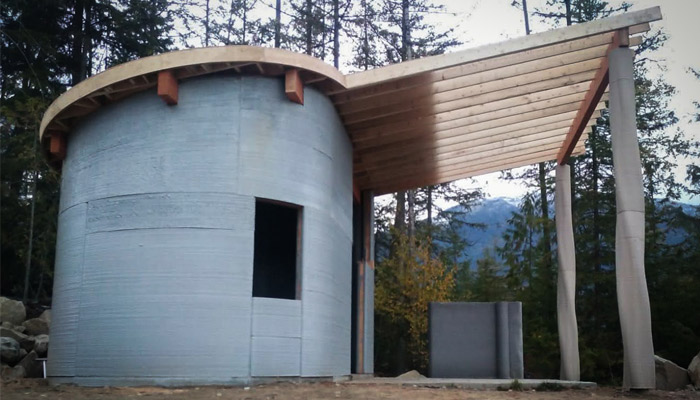
The 3D printed house (photo credit: TAM)
3DN: How do you see additive manufacturing in construction in 5 years?
We see the additive manufacturing segment of the construction industry growing at a fast pace as more buildings get constructed and more projects see the light of day. A major hurdle for the industry is actually the public engagement and acceptance which can only really be achieved by people from the public seeing and feeling the printed structures for themselves. Therefore, as more work is done and more people are exposed to the benefits and applications of the technology, the demand will increase.
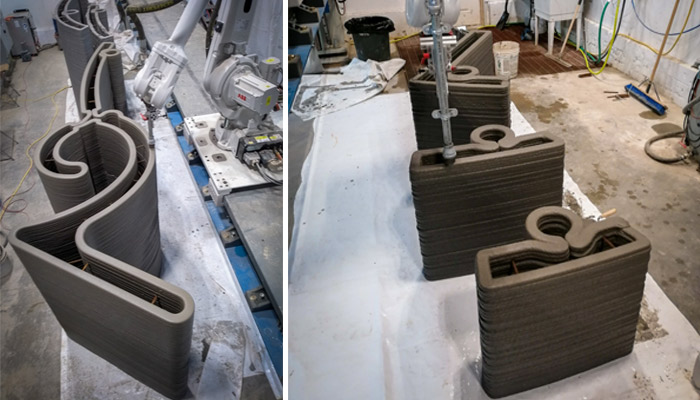
TAM was inspired by the Fibonacci sequence when designing the shapes of its house (photo credits: TAM)
3DN: What projects do you have planned for the future?
We are working on another house project to be printed in 2021 along with more machinery development to aid the 3DCP community in achieving reliable and impressive printing feats.
3DN: Any last words for our readers?
As your readers are already experienced in additive manufacturing we would be curious to know what they would print or use the large format printers for if they had one. The new applications are always exciting to take on. We also encourage everyone to learn about the technology, its limitations and capabilities, and to look forward to a very exciting 3d printed future!
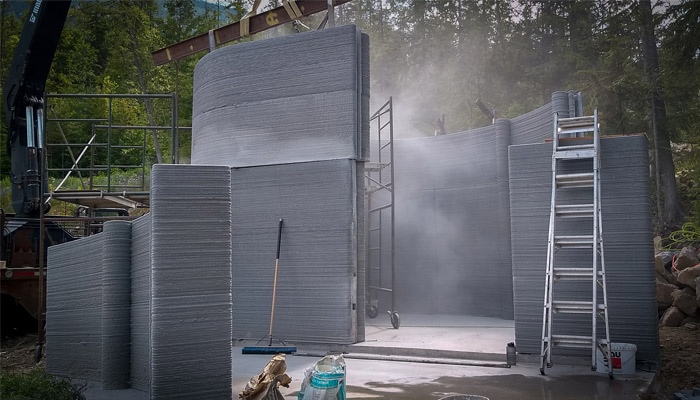
Photo Credit: Twente Additive Manufacturing
You can find out more about Twente Additive Manufacturing’s projects and technologies on their website. What do you think about using additive manufacturing to build houses? Let us know in a comment below or on our Facebook and Twitter pages! Sign up for our free weekly Newsletter here, the latest 3D printing news straight to your inbox!







We are interested in further details and the building of diverse types of housing for popular living and resort sites.
Also, the capacity of using it for two floors houring?
I live in North Vancouver, BC in a landslide risk area. I may need to resort to a retaining wall behind my house to protect my property. Do you do this kind of work? If so, I could get my geotechnical engineer to be in touch. Are you familiar with rammed earth construction? I lived in a cottage on Salt Spring Island made of it. Totally wonderful! I am impressed by your thinking outside the box.